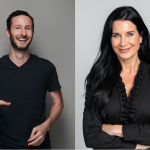When we imagine power, we often think of prestigious titles, millions of followers or frequent media appearances. But in entrepreneurial practice, these are fragile assets: A single crisis can erase them in hours. The difference between those who survive and those who vanish? Reputation — an invisible form of capital that decides whether people will still follow you when the lights go out.
Today, in the age of artificial intelligence and instant communication, reputation functions as a credibility algorithm. It’s not measured in views or likes, but in consistency, perceived authority and the ability to inspire trust, even in uncertainty.
Research by Willis and Todorov at Princeton University demonstrates that people form judgments about trustworthiness, competence and other characteristics after just 100 milliseconds of exposure to unfamiliar faces. Additional studies from the University of Glasgow show that humans form trustworthiness judgments within the first 500 milliseconds of hearing someone’s voice.
As Todorov, Baron and Oosterhof found, threat and trustworthiness perceptions are processed particularly rapidly, determining basic approach/avoidance responses. These evolutionary mechanisms, designed for survival in complex social contexts, today determine the success or failure of leaders and entrepreneurs in a hyperconnected world.
Related: How to Build a Reputation That Will Become a Real Asset for You
The invisible power of strategic silence
Among the most underrated strategies for protecting reputation, silence holds a special place. It is not passivity; it’s an intentional, active choice. Deciding not to react immediately to a provocation buys time to think, assess and respond surgically.
Silence has a precise psychological effect: It frustrates your attacker, often pushing them to overplay their hand and make mistakes. This dynamic is well known in negotiation — those who can tolerate pauses and gaps often control the rhythm and content of the exchange. Research in cognitive psychology shows that during moments of silence, people tend to fill conversational voids with their own thoughts and anxieties, often revealing more than they initially intended.
I witnessed this principle firsthand during a pre-Christmas Saturday in a crowded supermarket when half the cashiers suddenly went on strike. Instead of issuing press releases or excuses, management chose silence. Within 20 minutes, operations were reorganized, and five volunteers began handing out panettone to customers. No words — just tangible actions. The result? A stronger corporate reputation.
This example illustrates how direct action, unmediated by explanations, can transform a potential reputational crisis into an opportunity for brand strengthening. Customers remembered not the initial inconvenience, but the speed and humanity of the response.
Anticipating crises with the “minefield map”
Reputation management cannot be improvised. One effective method is to create a “minefield map” — a plan that identifies vulnerabilities and potential crisis points in advance. This tool, kept confidential until the right moment, guides decisions during chaos, when clarity risks giving way to emotion.
The map should include specific scenarios: social media attacks, criticism from competitors, unexpected operational problems and ethical or legal controversies. For each scenario, three things must be predefined: who speaks (and who stays silent), what is said (or not said) and when action is taken. This preparation is not strategic paranoia, but operational intelligence.
Anticipating negative scenarios is not pessimism — it’s preparation. It means knowing ahead of time which actions to avoid and which to take to safeguard credibility. As Eccles, Newquist, and Schatz note in Harvard Business Review, a strong, positive reputation doesn’t just attract top talent and foster customer loyalty — it directly drives higher pricing power, market valuation and investor confidence, making it one of the most valuable yet vulnerable assets in a company’s portfolio.
Related: 9 Steps for Building a Reputation Management Plan That Wins Customers and Gives You an Edge
Acceptance and consistency: The foundations of credibility
Being an ethical or generous person is not enough to build a strong reputation. Credibility comes from self-acceptance — flaws and failures included — and from consistency between what you communicate and what you do.
In business, this means that degrees and certifications may prove competence but do not guarantee trust. Trust is built when every interaction, both internal and external, aligns with the image you aim to project. Timing is just as crucial: A correct message sent at the wrong moment can be perceived as inappropriate — or worse, damaging.
Authenticity, however, doesn’t mean sharing every thought or doubt. It means being faithful to your core values even when this involves short-term sacrifices. Stakeholders (employees, customers, investors) develop trust when they can predict your reactions based on stable, declared principles.
Visibility vs. reputation: Two different roles
Visibility is like a spotlight: It shines indiscriminately on whoever steps into its beam. Reputation is the puppeteer: invisible, but in control of every movement.
Too much exposure without a solid reputation makes an entrepreneur vulnerable and easily manipulated. Conversely, those with strong credibility maintain control even when media attention fades. In the natural cycle of public careers, popularity always diminishes over time. What remains — and continues to generate opportunities — is reputation.
The difference is subtle but decisive: Visibility makes you recognizable, reputation makes you chosen. In a market saturated with content and personalities, being noticed is relatively easy; being chosen repeatedly requires something deeper and more enduring.
How to strengthen reputation in the AI era
For entrepreneurs and leaders, AI has accelerated the speed at which both information — and misinformation — spread. Protecting reputation now requires proactive actions and active management of your narrative. Here are three concrete practices:
1. Continuous monitoring: Use social listening and media analysis tools to detect early signs of crisis. Monitoring is not just about “putting out fires,” but about understanding which messages build trust and which create friction.
2. Cross-channel consistency: Ensure that your message and values are consistent across every platform — social media, press, official statements, interviews. Even small inconsistencies can undermine trust.
3. Train strategic silence: Incorporate provocation-response drills into leadership training. Simulate scenarios where the best answer is no immediate answer, to strengthen emotional control and prevent reputational damage.
Related: It’s Time to Clean Up Your Act — How to Manage Your Reputation in the Era of AI
The final question
In a market where AI and instant communication amplify every action, reputation is the ultimate currency. Visibility makes people notice you. Reputation makes them choose you.
As an entrepreneur, ask yourself: “If I could no longer speak for myself, what would my reputation say?” The answer will guide your decisions more than any visibility metric ever could.
When we imagine power, we often think of prestigious titles, millions of followers or frequent media appearances. But in entrepreneurial practice, these are fragile assets: A single crisis can erase them in hours. The difference between those who survive and those who vanish? Reputation — an invisible form of capital that decides whether people will still follow you when the lights go out.
Today, in the age of artificial intelligence and instant communication, reputation functions as a credibility algorithm. It’s not measured in views or likes, but in consistency, perceived authority and the ability to inspire trust, even in uncertainty.
Research by Willis and Todorov at Princeton University demonstrates that people form judgments about trustworthiness, competence and other characteristics after just 100 milliseconds of exposure to unfamiliar faces. Additional studies from the University of Glasgow show that humans form trustworthiness judgments within the first 500 milliseconds of hearing someone’s voice.
Join Entrepreneur+ today for access.
Read the full article here







